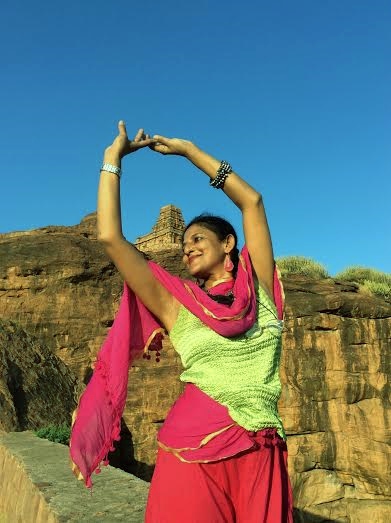
Figure 1: Navina Jafa performing in landscape of Badami caves
Every block of stone has a statue inside it and it is the task of the sculptor to discover it….. Michelangelo
The weathered geological topographical formation of the Deccan in North Karnataka, gets a form and manifests itself as impulses of intangible and tangible heritage reflecting diversified ingenuity of human beings. While Hampi remains a highlight for travelers when they visit this region, it is the lesser known destinations of Ahihole, Pattadakal and Badami that speak of sacred stories in secret India. These Heritagescapes are reflective musings of underpinning of trade and economics, of power and egos and are older than the heirtagescape of the Hampi the heritage terrain of the Vijaynagar Kings (14th-17th AD).
All three locations (Ahihole, Pattadakal and Badami) are associated with a South Indian league of rulers called the Chalukyas of Badami. While Aihole (5thc) was the first and Badami (6-8th c AD) the second citadel of the Chalukyas. Pattadakal (7th-8th c AD was the coronation location for the Chalukya kings. All the locations including that of Hampi are situated on rivers.
Running river waters have since the inception of human settlements provided ideal environments for man to live, trade and sustain communities such that rivers in most ancient cultures become revered and represent sacred geographies that sustains life, and generates a range of rituals and metaphysical symbolism. Hampi is on the river Tungabhadra whose sacred name is Pampa. Pampa in the anthromorphic form is the revered Goddess, wife of Pampati or Shiva. On the other hand, the land of the Chalukyan kings (Aihole, Badami and Pattadakal) are located on the river Malaprabha. Both Tungabhadra and Malaprabha are tributaries of the east flowing river Krishna, and are perceived as part of a sacred landscape. Tourists while decussating this sector visit the more evident sites of Hampi and Badami but more often than not give a miss to Aihole and world heritage site of Pattadakal.
Aihole is a quiet village replete with history. Defined by a craggy landscape, there is on one hand the historical evidence of megalithic man in the form of burial sites and on the other hand, the village of Aihole is dotted with carved caves, temples, cells and spaces for meditative retreats.
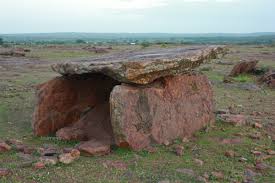

Figure 2-Megalithic Burial Site- Aihole Fig 3: Meguti Jain temple – aihole
An important aspect of heritage interpretation on Aihole is the context of economic heritage that underlines the narrative on archaeology and art history. In the background high on a hill bordering the megalithic site is the presence of silent, but energized locations of Jain temples, retreats of Jain monks, and the history of vibrant support and presence of trader’s guilds without which the governing class would not have existed.
The traveler climbs a hill and is awakened to the powerful energies on top captured in the Jain Meghuti Temple and where on its wall is an inscription by the 7th Jain poet Ravikirti celebrating the power of Chalukiyan ruler Pulkeisan II. These Jain manifestations are above the other built heritage landscape of Hindu caves, and temple complex. The Hindu caves located below the Jain hill are dedicated to sacred pantheon of Gods, and Goddesses representing myths, metaphors and symbols.
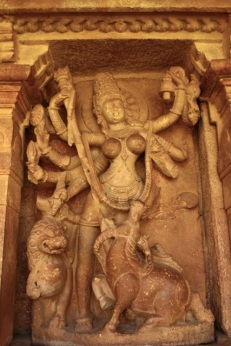
Figure 4 – Mahisasurmardini – Ravalapadi Cave temple in Aihole,
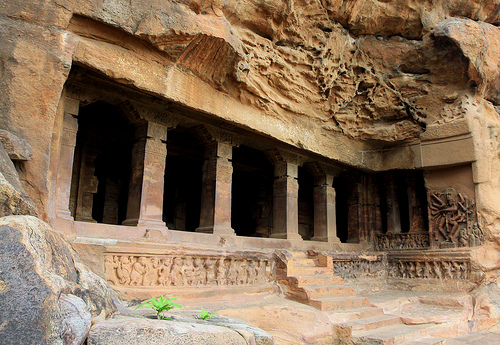
Figure 5- Dancing Shiva, Ravula Phadi Cave, Aihole
Finally on the lowest level alongside of the village is the main temple complex. There is the Sun temple called the Durga temple after the linguistic term Durg for Fort.

Figure 6- Temple Complex – Aihole
Thus the temple communicates through sacred tangible heritage the idea of political power. However, what is most distinct about this 5thc AD complex of Aihole is the economic heritage of the trade guild of 500 merchants who were the patrons behind most temple building. This guild called Nanadesi (those who can be perceived as exporters) and Swadesi (those traders who were engaged with internal trade) reigned in Ayyavolu the ancient name for Aihole. They financed building of cities, temples, conducted on and offshore trade to South East Asia. These traders employed ascetic armies similar to the phenomenon in the Doab in North India, where there spiritual army troops were called Bairagis, Goasains or Sanyassins in medieval period. The armies of the Nanadesi and Swadesi (the trader guilds hosted private parallel armies to those of the ruler.) These guilds demonstrating the economic power elite, organized themselves into administrative structures, boards and laws addressed trade norms, overseas operations including those that concerned ports. They were aligned closely with the political and religious (Hindu and Jain) elites, and were part of the forces which carried cultural imprints to South East Asia along with others parts of the Indian subcontinent such as the trade dynamics from the area of Orissa along the Chilka Lake.
Badami
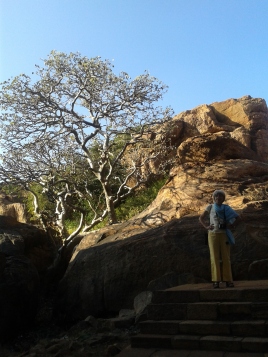
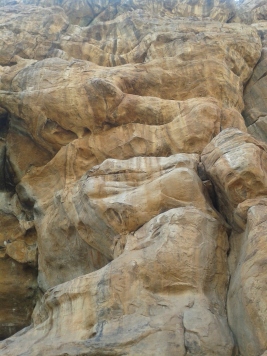
Figure 7-8 : The Geological presentation of Badami Caves
The setting of the Badami caves is no less spectacular than the raw boulders of Hampi. The red, craggy, jagged mountains around an artificial reservoir (Agasthyathirth) on three sides, and the Hindu and Jain carved caves on the fourth side opens an unimaginable scene of narratives through iconographic carvings. The Badami sculptures are replete with innumerable metaphysical ideas, concepts of sacred geography and geometry. For example, I would like to mention just one small and brief aspect of the manner in which the in-depth layers of sacred structure of the universe is represented in the carvings. This is the scheme represented through the underlined, visible and yet un-coded intriguing geometry related to the concept and ideas of square and circle in Indian thought.
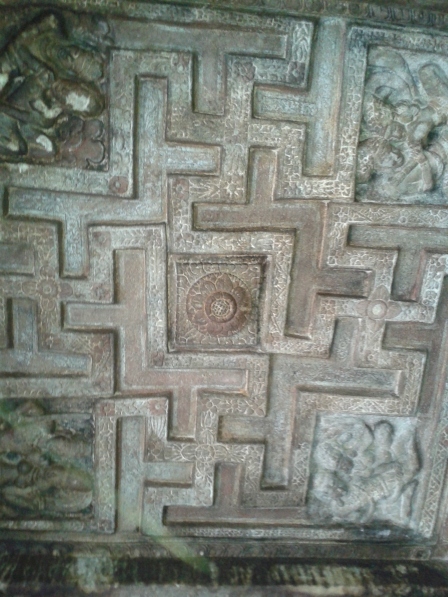
Fig 9: Reverse interlocked Swaistikas on ceilings of Badami Caves- The idea of the Square
The Square represents various levels of form in a spatial format of the external world – universe, citadels, sacred places, individual in the outer environment, and also aspects of the inner individual geography. The square is a map to comprehend different levels of existence – physical body, subtle body and conscience body. On the other hand, the circle is about the natural non dual yet apparently opposite aspects of the cosmic order called rta in Sanskrit whether it is — day – night, changing seasons, contrasting concept of age, there is a circularity of continuity of time.
Yet, both the square and the circle have a central point of energy – which is coordinated to the central energy point and life point in the human body the nabhi (the naval). The various paths to travel the square or the circle are marked channels which are organized in a certain pattern, on many occasions as interlocked systems of energies that expand and collapse (like that in the above image of the reverse set of interlocked swastikas in the ceiling of Badami caves). These concepts are represented in and through various sculptures in Badami through myths, symbols and metaphors. For example, the idea of the Dancing Shiva as the cosmic forces in geometrical channels. This is represented in a book of tenets on Indian sculpture – The illustrations below are that of the Natabara Yatra symbolizing the cosmic dance of Shiva.
This can be taken as a reference point when one interacts with the powerful image of the 18 armed dancing Shiva in Cave 1 of the Badami.

Fig 10 : Natabara Yatra depicting Dancing Shiva
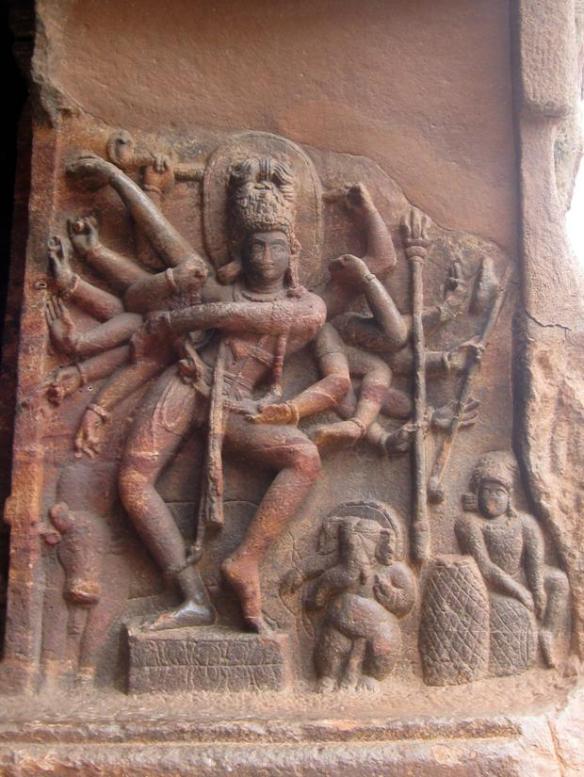
Fig 11: 18 armed Dancing Shiva
The idea of cosmogonic energies in ideas of sacred geometry become incredibly important as one views the concept and motif of the circle represented through mysteries of myths and symbols such as in the ceiling where one sees the serpent circle, or the circle made with 15 fishes.
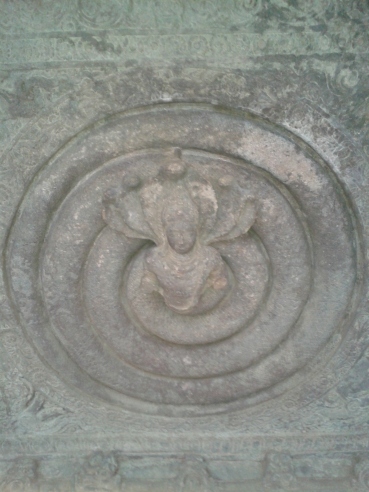
Fig 12: Concept of Circle – Emerging Serpent God from ceiling
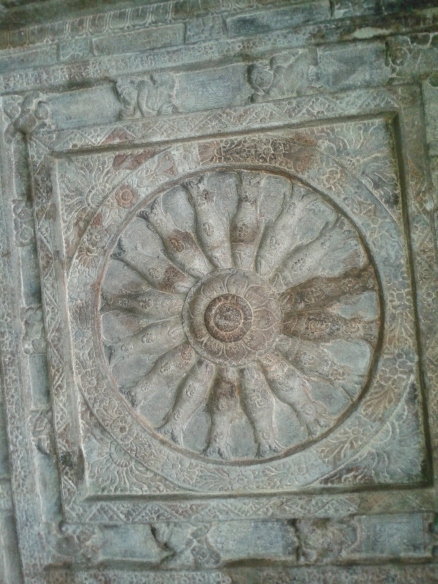
Fig : 13: The circle of Fishes
Besides these spectacular caves, are some sites outside the Badami town which are as well interesting and are associated with the heritage of the Chalukyas. For example, encircled by magnificent Banyan trees is the 6-7th c Shiva Mahakuta Temple complex built by the Chalukyas. While on one side stands the elaborate carved ceremonial chariot, the complex itself has some interesting features. Large number of the un-manifested form of Shiva – lingas are strewed around.
Fig 14: Banayan and Chariot of the Mahakuta Temple
The Mahakuta Shiva Temple Complex is full of lingams of various sizes, shapes and designs. The uniqueness of this complex is that it is a living sacred space owned by the community. A well maintained community bath, a wish fulfilling swing under a Banyan tree. The temple has some fascinating ritual objects, and the ground is still used for marriages.

Fig 15 : inside the temple
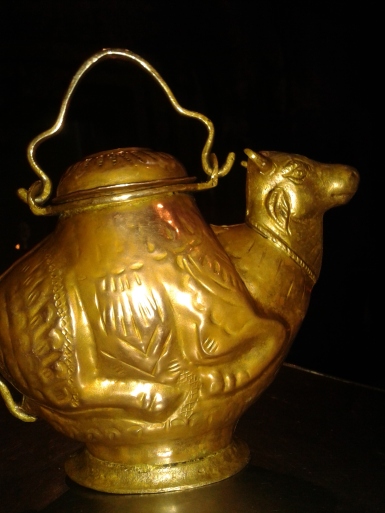 Fig 15 : Ritual objects in the Temple
Fig 15 : Ritual objects in the Temple
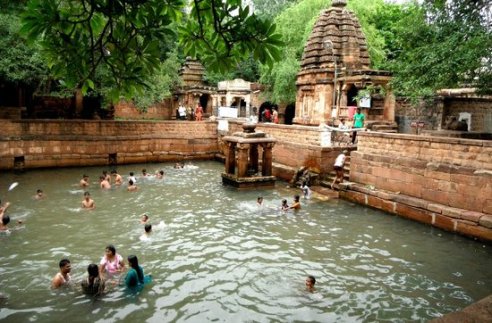 Fig16: Community Bath
Fig16: Community Bath
An impressive statue is that of a spectacular androgynous form of Shiva ardhnarishwar. The beautiful left side is that of a woman and the right side that of a man.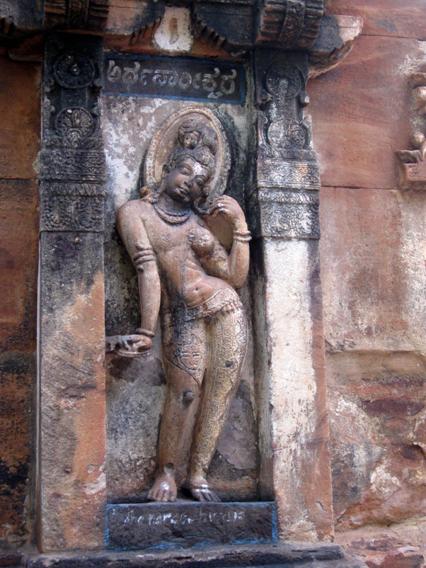
The layers of Badami incorporates the Bhanashankari Temple. Banashankari or the goddess of vegetable was the principal family deity of the Chalukyan Kings, and is known presently as a fertility goddess who fulfills the wishes of childless couples.
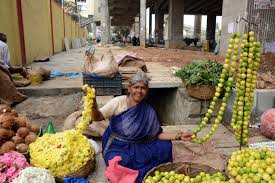

Finally the visit to Badami remains incomplete without buying or seeing the vibrant range of the Ikal Saree. There is the Banashankari women weaving cooperative which supplies among other places to the market complex of the temple. The special feature of the Ilkal weave is that the warp is of cotton threads, and there is silk that makes up the weft. Usually a nine yard saree, the Ilkal weave uses an embroidery pattern called Kasuti reflecting traditional patterns of lotuses, elephants, temple towers. The end of the pallu or the end of the saree has intriguing patterns and shpaes such as that of hanige (comb), Kotti Kammli (ramparts of forts). The contrasting border is broad and on the whole the sarees are striking.

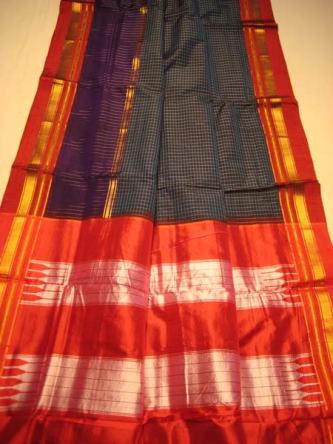
Pattadakal
The third stop in the itinerary of the heritage of Chalukyas of Badami is the world heritage site of Pattadakal. As mentioned before, the location of this small sleepy village is besides the river Malprabha where the river acquires its sacredness by the fact that just in this area it flows backwards north towards its source and is therefore called Uttarvahini. A similar phenomenon exists in the nature of the flow of Ganges in Varanasi, and hence the importance of Varanasi among other factors as the sacred city.
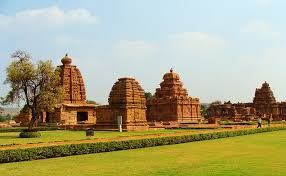
The Chalukyan kings beseeched various gods to bless and protect them, and thus chose Pattadakal as the place to begin their reigns and the location for their coronation. The uniqueness of this World Heritage Site (built and functioned between 7th-9thc AD) is that it presents a range of Indian temple architecture.
Pattadakal complex comprises of ten temples representing the North India Nagara style, the South India style – Dravida, and the third is specific to the Western Deccan marked by the fact that it incorporates both the above styles of architecture. This category is called Vesara architecture. Through architecture the visitor accesses the link between the concept of power and that of religious sanctions and authority. The temples are both Jain and Hindu, and are a record to communicate the celebration of a king’s victory, or a queen’s assertion of power through architecture. Myths, motifs through a series of sculptural schemes define the temples.
One of the most lovable and beautiful piece of sculpture is the Nandi Bull, the sheer lyricism that marks the curves of the sculpture is remarkable.
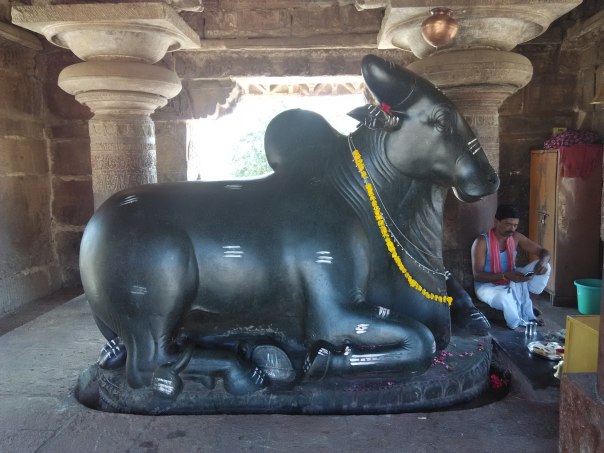
One of the most lovable and beautiful piece of sculpture is the Nandi Bull, the sheer lyricism that marks the curves of the sculpture is remarkable.
As the sun sets, the hundreds of hands that silently carved the amazing set of temples and sculptures remain etched in the mind, and as one steps out, the landscape of the Chalukyas of Badami and lesser known heritage are engraved in the mind of the wandering pilgrims who urge themselves to de-code the multiple layers of the Indian civilization. While as a traveler one journeys to admire the tangible built heritage, it is always fascinating to piece the jig-saw together. Human histories from various perspectives of economics, sociology, politics, spirituality, oral history, common beliefs, and living practices unfold the story of an archaeological and architectural layout in a complete manner. It does take one to walk that extra mile, but for accessing an experience called India it is not only essential but needed for the enrichening of the self.


1 thought on “Stones, Stories & Creative Impulses Aihole, Badami, Pattadakal Lesser known Heritagescapes of North Karnataka- Dr. Navina Jafa www.navinajafa.com”